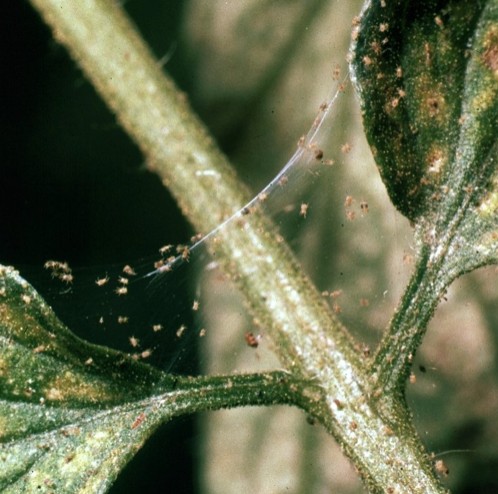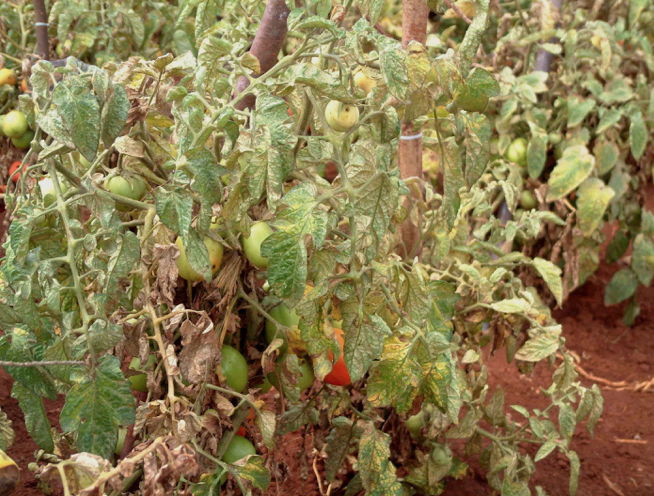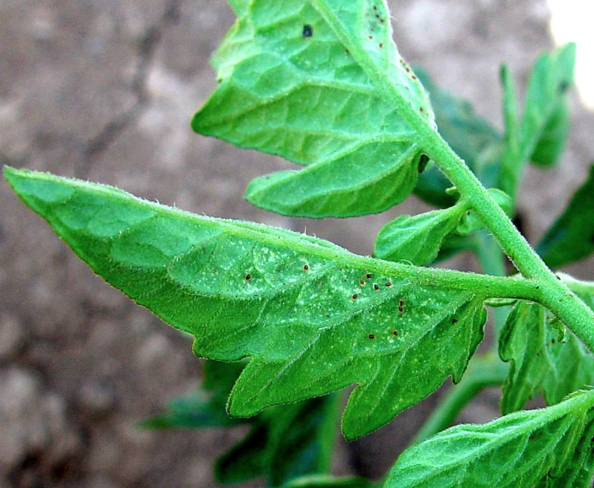Spider mites (Tetranychus spp.)
Credit: Biovision-Infonet

(c) A. M. Varela, icipe.

(c) Clemson University – USDA Cooperative Extension Slide Series, Bugwood.org

(c) A.M. Varela, icipe

(c) A. M. Varela, icipe
Spider mites are important pests of tomatoes. They are more prevalent in dry areas. Infested leaves show a white to yellow speckling and then turn pale or bronzed. High spider mite infestation causes defoliation, which leads to production of smaller fruits with lower content of ascorbic acid (vitamin C). Spider mite feeding on fruits causes speckling of the fruits.
The tobacco spider mite Tetranychus evansi, is one of the most damaging spider mites on tomato. This spider mite can kill plants very rapidly under hot and dry conditions. Plants with high numbers of this mite can be covered with webbing and an orange cloud of mites.
| What to do: Conserve natural enemies. Natural occurring predators are in many cases capable of controlling the two-spotted spider mite and the carmine red spider mite. However, this is not the case for the tobacco spider mite. There are few predators known to feed on this mite. In Kenya, ICIPE has released predatory mites for control of the tobacco spider mite in early 2007. Inspect the crop regularly to determine the presence and level of infestation of spider mites. A recommended monitoring method is to select randomly 20 tomato plants and access the level of mite damage of three leaflets per plant using a leaf index ranking from 1 to 5 (1 is few yellow spots, 5 is leaf totally covered with spots, dry patches occur). Once the average damage level excess the first rank, control measures should start. When detected early, initial infestations are usually concentrated on a few plants, in many cases in the borders of the field. In this situation, remove and burn or bury infested plants to prevent the problem from spreading and becoming serious. Since mite populations are initially restricted to some plants, spot spraying (spraying only attacked plants) is usually effective. Avoid the use of broad-spectrum insecticides. They may kill natural enemies. In addition some synthetic pyrethroids can actually enhance spider mite reproduction leading to mite outbreaks. Spraying neem extracts, soapy solutions and water are reported to help control red spider mites. Avoid water stress. If necessary, irrigate the crop regularly, and apply mulch to reduce water evaporation. Practise good field sanitation to minimise the risk of infestation. Keep the field free from weeds, remove and burn or compost crop residues immediately after harvest. Avoid planting new crops next to an already infested field (tomato or other crops). |